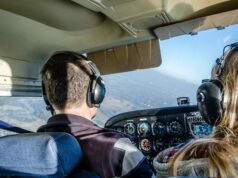
Planning a diversion is always a high workload task which could potentially lead to overlooked items. Careful planning and consideration are paramount to a safe outcome and a successful diversion.
Often unplanned decisions, diversions require pilots to promptly establish a suitable airport for landing other than the originally intended destination. These may occur as a result of unforecasted weather, medical emergencies, security threats, inflight mechanical non-normals, among other situations.
Considering the urgency of the scenario will determine how promptly the aircraft is required to divert. While certain emergencies are “no-time” circumstances, which require landing as soon as possible, others allow additional time for planning. It is imperative that pilots recognize the severity of the emergency, thereby realizing how much time will be available to the crew while preventing an unnecessarily rushed diversion. As always, rushing leads to omissions and potential errors.
Equally important is to carefully read and execute any checklist or quick-reference handbook. Certain checklists will indicate an immediate landing, while others will direct the pilot to land at the nearest suitable airport. Typically, the definition of “suitable airfield” is an airport with the necessary resources and equipment to support the operation of the aircraft, meeting the required weather minimums for landing, as well as the runway lengths required based on landing weight. Be sure to refer to any overweight-landings checklists, as applicable, during the planning stages of a diversion. Landing overweight may be an abnormal procedure depending on the type of aircraft being flown, requiring additional considerations. Pilots shall never assume any inflight indications are false warnings. Treat all warnings as accurate, unless there is a specific reason to do otherwise.
Diversions will vary depending upon whether an aircraft is operating under VFR or IFR. IFR diversions are more complex, given the required level of coordination with ATC. Many IFR flights are required to file an alternate prior to departure based on the destination’s forecasted weather. It is imperative to remember that filed alternates are just for planning purposes. Regulations do not require pilots to divert to a filed alternate once airborne, if any other suitable alternate becomes available later.
Fuel is a critical component of any diversion. Proper preflight planning shall include any fuel reserves for a potential diversion, in compliance with FAA minimum fuel requirements. In addition, pilots shall carry sufficient fuel to meet their own personal minimums, level of experience, among other individual factors. Declaring a fuel emergency at the appropriate time will guarantee controllers provide the pilot with the necessary level of assistance. Never hesitate to confess to ATC the state of fuel in order to reduce potential delays leading to unsafe outcomes. If operating in multi-crew environments, to verify accuracy, after an independent calculation, cross check any fuel-prediction calculations with the other crew member. Finally, never allow passenger pressures or personal circumstances to influence a diversion decision. As the pilot in command, safety drives the decision.
While the reasons for a diversion are vast, typically a successful outcome is the result of teamwork and detailed preflight planning. In addition to the FAA fuel reserves, pilots must carry sufficient fuel to meet their personal minimums. A methodical diversion includes determining the severity of the situation, followed by an analysis of the suitable diversion airports. Not every airport will be capable of satisfying the performance requirements for landing. While certain diversions require immediate action, such as a fire or smoke, most will benefit from time for evaluating the circumstances, and slowing the operation.



















































